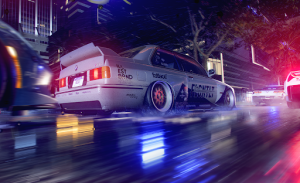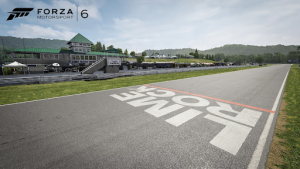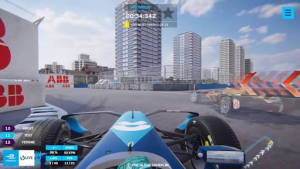Racing games have a separate fan base. Need For Speed, F1 2021, Dirt Rally, and Super Mario Deluxe are some of the much loved racing games by players all over the world.
When looking at these games one could not help but wonder “How are video racing more enjoyable and realistic at the same time?”
There are many contributing factors to that. Game mechanics is the most important factor of all. The game mechanics in racing games include vehicle control including acceleration, steering, and brake control, track design, levels and challenges, racing modes, physics simulation, drifting, customization, and many more.

Every racing game has its unique game mechanics. The present day racing games offer complicated gameplay, stunning visuals, and a realistic game environment. In order to reach today’s advanced racing game features, it has traveled a long way for over 50 years.
Here let us take a look into the long history of racing games and their evolution throughout the years.
The first racing game was Space Race (1973) released by Atari which is a two-player game. It had only limited movements (up and down) and had simple line graphics. This game inspired the Japan game development studio, Taito to create a similar game, Astro Race (1973).

Space Race (1973) is the first racing game and it was released by Atari.
Following this, Taito Corporation developed the first arcade racing game Speed Race (1974) which made a major breakthrough with its scrolling background and over the head view. After this, many popular racing games like Gran Trak 10, Night Driver, and many more were released in the 1970s. They came with better game mechanics such as multiplayer function, gear and steering control, third-person view, and many other fantastic features.
Moving forward, the next decade can be marked as the era of arcade racing games. In the 1980s many popular racing games like Pole Position (1982), Rally X (1980), Hang On (1985), and Out Run (1986) were released.
The decade also gave birth to the simulation racing game, a new subgenre of the racing games genre. Some of the notable features that were introduced in the 80s include background music, nitro boost, early 3D texture mapping (using Super Scale), track styles, and polygonal graphics.

Super Mario Kart game was released in 1992 and it gave rise to a new subgenre in racing games — Kart Racing games.
In 1992, Super Mario Kart was launched giving rise to a new subgenre — kart racing game. Need For Speed, and Gran Turismo are some of the most successful games released in the 90s decade. Gran Turismo (1997) was the first racing game that showcased a complete 3D graphic environment. The later 90s games exhibited more varied colors, complicated game mechanics, and fantastic artwork.
Slow motion movement, detailed car models, realistic physics, improved driving mechanics, and immersive 3D landscapes are the advanced features in the 2000s racing games. Since then many racing games have been released with more advanced features like 3D realistic graphics, customization of cars, fantastic car collections, and advanced game mechanics. Forza Horizon 4, Mario Kart 8, Dirt Rally 2.0, and Asphalt 9: Legends were a few of the highly successful video racing games.
By now you would have an idea of the evolution of racing game mechanics and its features over the years. Now, let us see in detail the important racing game mechanics commonly seen in many popular racing games.

Vehicle Control is the basic game mechanics in a racing game and speed is the most important metric in it. In racing games, the player should be able to control the vehicle to drive at the maximum speed and win the game by crossing multiple obstacles along the track. Steering control, acceleration, and brakes are the control mechanisms in racing games. Every player has their own way of playing and each game has different types of controls such as tap-spot control, tilt control, swipe control, and D-pad control.
Moreover, the vehicle control mechanism also differs based on the type of the game. When you take simulation racing games, the controls are more structured whereas arcade racing games have free gameplay controls.
In racing games, realistic physics such as acceleration, braking, cornering, weight transfer, suspension system, and collision responses are applied. You can see realistic physics simulations applied more in simulation racing games to enhance the experience of the players whereas arcade racing games use a more liberal physics to make the game more enjoyable, easy, and fun to play.

Track design plays a significant part in providing a player with the most realistic experience of car racing. Most racing games use circuit tracks. Road circuits/ street circuits, hybrid circuits, speedways, etc., are some of the commonly used track designs in video games.
Apart from deciding the type of track, the game designer needs to consider other factors such as the race line, ideal entry point, exit point, clipping point, track width, camera angle, camber (how the car turns in the corners (oversteer or understeer)), and many other metrics to design the ideal race track.
Power-ups are temporary or permanent gains a player collects in a game while racing. They can be used for increasing speed, as shields, or for vehicle upgrades. Some powerups last only for a few seconds like boosting whereas others might be permanent like collecting a rare card or item that can help the player to unlock a new model vehicle.
Difting is the skidding of a vehicle sideways by deliberately applying gear, brake, throttle, and clutch where the driver actively controls the vehicle over-steering. Most arcade racing games use drifting to have better control of the vehicle when turning around the corner. Additionally, it gives a stylish look adding to the excitement of the player.
Nitro boost is a powerful performance booster for racing games. In a racing game, when the player drifts, the nitro booster gets powered up. The longer the player drifts, the faster the nitro powers up, and it is activated by double-tapping or pressing the relevant button.
Forza Horizon 4 tops the list as the racing game that has the best customization options — where the players are allowed to make changes to the non-functional vehicle parts to their liking, without any impact on the gameplay. Game customization proved to provide a more engaging and enjoyable gaming experience to the players as they are more invested in the game when they customize it.
Vehicle upgradation is necessary when the player advances in the game. The vehicle in the game is the extension of the player and it needs to keep up with the player’s advancement. Using coins, tokens, or vehicle parts like engines, gear, etc. the player can upgrade the game. It will help to increase the speed and capacity of the vehicle to the fullest.
Gran Turismo Sport, Project Cars 2, Forza Horizon, and F1 2021 are some of the notable racing games with the best career modes. The career mode in a game has a narrative streak with single-player mode — where the player starts from the lowest and advances through challenges, and difficult races to reach the highest level.
In exception, some games like F1 2021 have used two-player career modes in their games where the player can play the game with a co-opponent.

In the above image, a ghost car (transparent car) can be seen racing in the front.
The ghost car feature allows the player to race and beat the best racing track time previously achieved by the player or other players — where the game records the race and replays it. In the gameplay, a translucent car will be racing ahead of the player and they will try to beat its track time, competing with it. The player can see the path taken and the stunts performed by the ghost car and can even copy them to ace the race.
So far, we have seen the various racing game mechanics that are commonly used in the games.
Here, we have taken Asphalt 9: Legends (an arcade car racing game) and have explained its game mechanics in detail for your better understanding of the topic.
Asphalt 9: Legends, the 15th game in the Asphalt series was released on July 2018 by Gameloft. It is easy to play and has fantastic graphics and aesthetics than Asphalt 8: Airborne. The game was first released for mobile phones and later it was released for PC and console platforms.

Let us see in detail the game mechanics of Asphalt 9: Legends below.
Asphalt 9: Legends is an arcade racing game that focuses on easy vehicle control and a rash and enjoyable gaming experience for the players. They predominantly have three types of controls which are touch drive, tap to steer, and tilt to steer.
If you are a beginner, it is better to start with a touch drive. It is one of the exclusive controls of Asphalt 9: Legends. If you switch on the touch drive, you do not need to worry about steering or acceleration. Deciding on the path to choose, drift and nitro boost are the actions, the player needs to perform while playing the game.
In multiplayer racing mode, using ‘tap to steer’ would be the only option to win the races most of the time. It will offer better steering control of the vehicle. Left or right turn, brake, and nitro are performed with this control. One little inconvenience is that it is difficult to perform drift with this type of control.
Pro players use ‘tilt to steer’ controls as they are the more efficient controls. They also have sensitivity settings which the player can adjust according to their preference. However, it is quite difficult when compared to other control settings.
Physics used in Asphalt 9 can be termed arcade physics where it focuses more on fun and thrilling experiences rather than realism whereas that is not the case for simulation racing games. The game is easy to control and even the non-niche players will like the game. Stunts, collisions, crashing, and takedowns are some of the mechanics in the game.
The racing tracks in Asphalt 9 are set with real-world references to places including San Francisco, China, U.S.Midewest, the Himalayas, the Great Wall of China, etc., capturing their essence and scenic beauty. The track design includes long and short circuits, straightaways, narrow corners, hairpin turns, elevated bases, and banked curves.
When the vehicle hits hard with another vehicle, a building, or any hard surface, the vehicle crashes. The crashing will be shown in slow-motion which is visually appealing to the eyes of the player. It is not a core game mechanic in the game but it adds to the enthralling racing experience for the players.
Asphalt 9 nitro is a powerful speed booster in the gameplay. The nitro is powered up by drifting and when you drift for a long distance, then the nitro tank fills up faster. Nitro also powers up by performing barrel rolls and 360.
In general, the game has four color nitros and each of them has specific variations.
Drifting offers better control of the car while turning around the corners. In Asphalt 9, drift is used to power up the nitro gauge. Apart from that, drifting a certain number of meters (say 300m or 600m) is given as a task and the player needs to complete it in order to advance to the next level.
Career mode is a single-player mode in the game where it has six chapters with almost 91 seasons, 1129 races, and 1918 flags to collect in total. The player collects tokens, car blueprints, and engine parts when they win the races.
360 and barrel rolls are the two major stunts performed by the players in this game which helps in enhancing the fun of racing. Performing barrel rolls while in the air boosts the nitro faster. Besides, it is an awesome and thrilling experience for the players.
Totally 209 cars are available in the game which is arranged from lowest to highest class starting from D, C, B, A, to S. The cars can be upgraded with the available tokens and import parts collected by the players.
Furthermore, to upgrade the vehicle the player needs to collect the blueprints of the cars to unlock it. The blueprints can be collected by participating in the challenges and races. Vehicle upgrades help to increase the speed and acceleration of the racing cars.
Car customizations can be done with the editor feature where the player can totally customize it to their personal liking. Using the editor, they can customize the color, material, and certain parts of the game including the rim and brakes.
Asphalt 9: Legends is a free-to-play game and the player can choose to upgrade to premium versions. It uses in-game currencies such as tokens, import parts, tickets, etc., and micro-transactions through purchases for vehicle upgrades and also for playing season challenges.
In conclusion, racing games have three common genres which are arcade, simulation, and kart games. Predominantly, the racing game features and its mechanics vary based on the genre of the racing game. When simulation games focus on a more realistic physics simulation in gameplay, the arcade racing game concentrates on providing fast pace and mind-blowing gaming experience to the players rather than realism.
Furthermore, some of the common game mechanics in racing games include vehicle control, track design, powerups, level design, challenges, drift, physics simulation, and racing modes. All of these mechanics need to work in sync to provide seamless gameplay for the players.
If you are planning to make games, reach out to Juego Studios. You can get an estimated cost breakdown within a day or two and our team of experts are happy to help with any of your doubts regarding game development.
Juego Studios is a leading game development company having 10+ years of experience in making games in multiple genres including racing games, strategy games, puzzle games, AAA games, shooting games, RPG games, and fighting games. We provide game art, game design, programming, testing, and other game development services.